- | 8:00 am
This man turned thermostats into a $3 billion business. Can he do the same for food waste?
Matt Rogers is bringing lessons from Apple and Nest to the climate-change problem hiding in your kitchen.
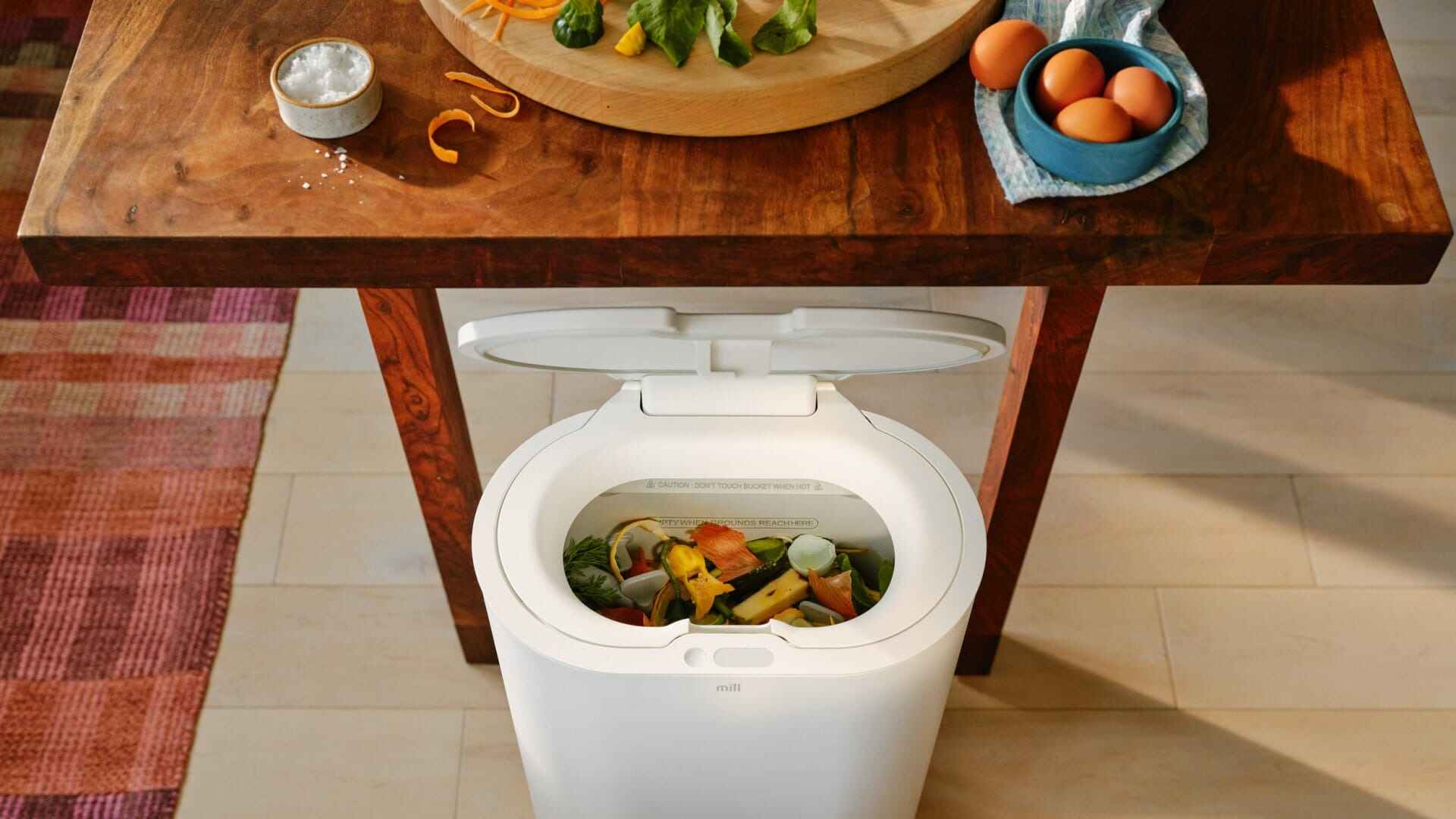
Inside a gadget-filled lab at an office outside San Francisco, there’s a refrigerator packed with clear Ziploc bags of rotting food. It’s an extreme version of the experience almost everybody’s had of opening their fridge to discover mold forming on a very leftover meal or a bag of spinach that’s turned into black goo. The bags are there for testing purposes—they represent the typical food scraps an average household produces on a regular basis. Mill Industries, the company that owns the lab, is using them to fine-tune a unique kind of garbage bin called the Mill that can turn those rotting food scraps into chicken feed.
Standing about 27 inches high, the Mill is the size of a typical kitchen garbage bin. But under its lid is a gaping mouth of metal blades that, in combination with a heated bucket, grinds and dries whatever food is added throughout the day. For a $30 monthly subscription fee, or a one-time purchase price of $999, customers can use the internet-connected device to divert their uneaten food from landfills, where it would decompose and produce a potent greenhouse gas. Instead, Mill’s bin is calibrated to preserve the nutrients left in food scraps, making them easier to reuse without the climate impact.
The rotting food in that lab fridge will eventually get dumped into sensor-rigged Mill bins in the company’s lab. Under the data-obsessed eyes of the company’s engineers, the bins are closely monitored to see how efficiently they can chew through everything from corn cobs and celery ends to fishbones and avocado pits. Some bags are stuffed with especially potent foods like rotting shrimp, kim chi, and blue cheese—the staff calls these stink bombs—to check the bin’s odor containment.
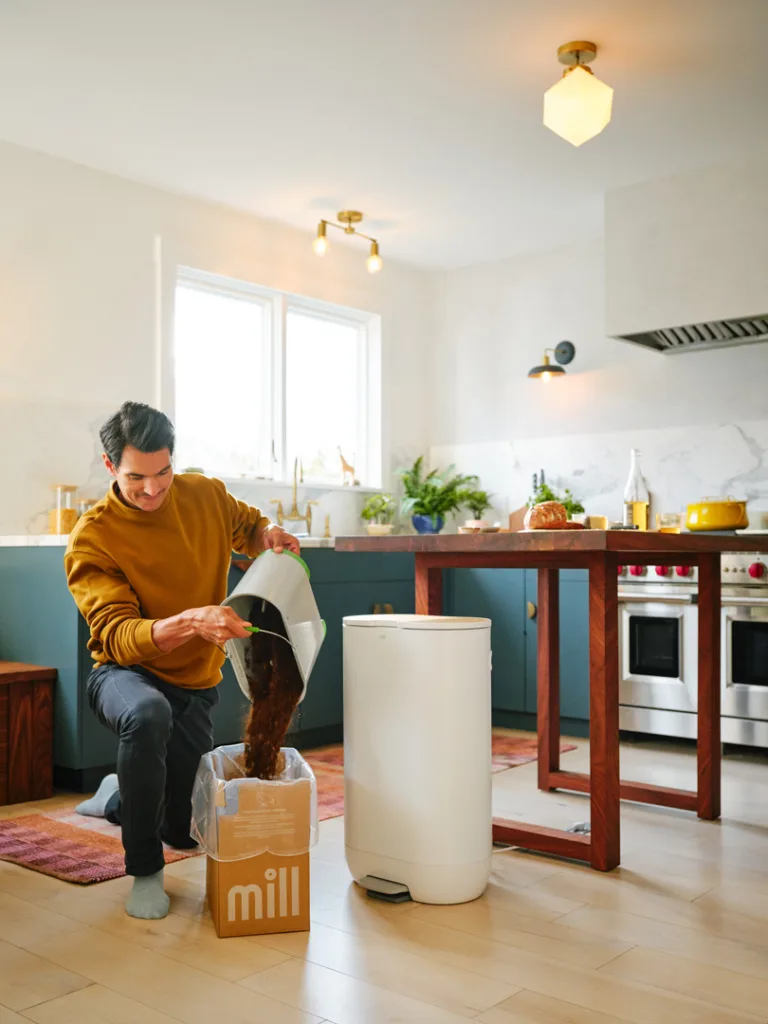
One engineer holds a smoking stick of incense up to a fan near the bin’s filter to check for any places smells might leak out from. Another checks on a durability test that’s repeatedly stomping on the bin’s foot pedal. “As you can see,” says Mill cofounder Matt Rogers as he shows me around the lab, “a lot of roboticists are making this machine.” They’re trying to streamline both the user experience and the mechanics of turning food waste into something less wasteful.
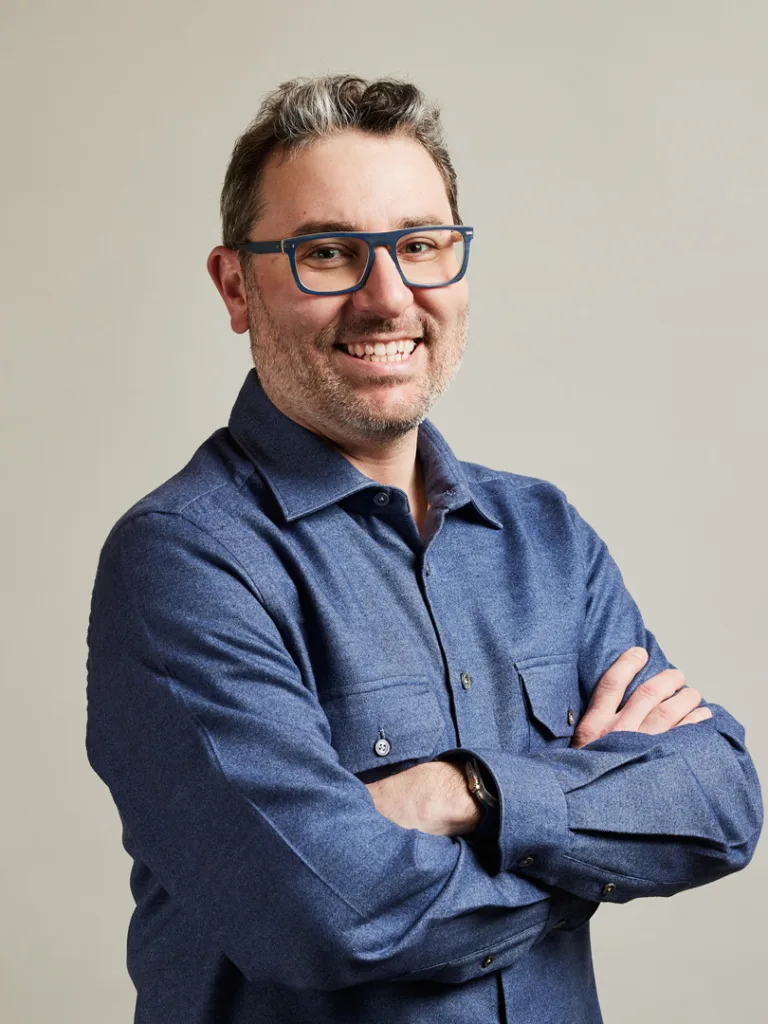
Rogers is a former Apple software engineer who worked under Steve Jobs and then went on to cofound the smart thermostat company Nest. By the time Nest was acquired by Google in 2014 for $3.2 billion, the company had reinvented the simple thermostat for the internet age, luring tech-savvy consumers with its programmability and utility companies with its ability to slash energy waste. Tens of millions have been sold since, including many subsidized by utilities themselves.
With Mill, Rogers is aiming for something even bigger: a radical reshaping of the way people think about and dispose of the food they don’t or can’t eat. What we’re doing today isn’t working, says Rogers: ”95% of food waste is still going to landfill. This is solvable. This is a tractable problem. Like, throwing food in the trash, we could just not do that.”
As a company, Mill is engaging in a multipronged effort to transform how food waste is discarded, how it’s collected, and how it’s diverted from a heavily polluting destiny in a landfill. Rogers is using the lessons he learned at Apple and from running Nest—and the immense wealth that’s brought him—to try to shift consumers and governments toward a new model. The slick, food-chomping garbage bin he’s helped create could be the thing that makes such an immense change possible.
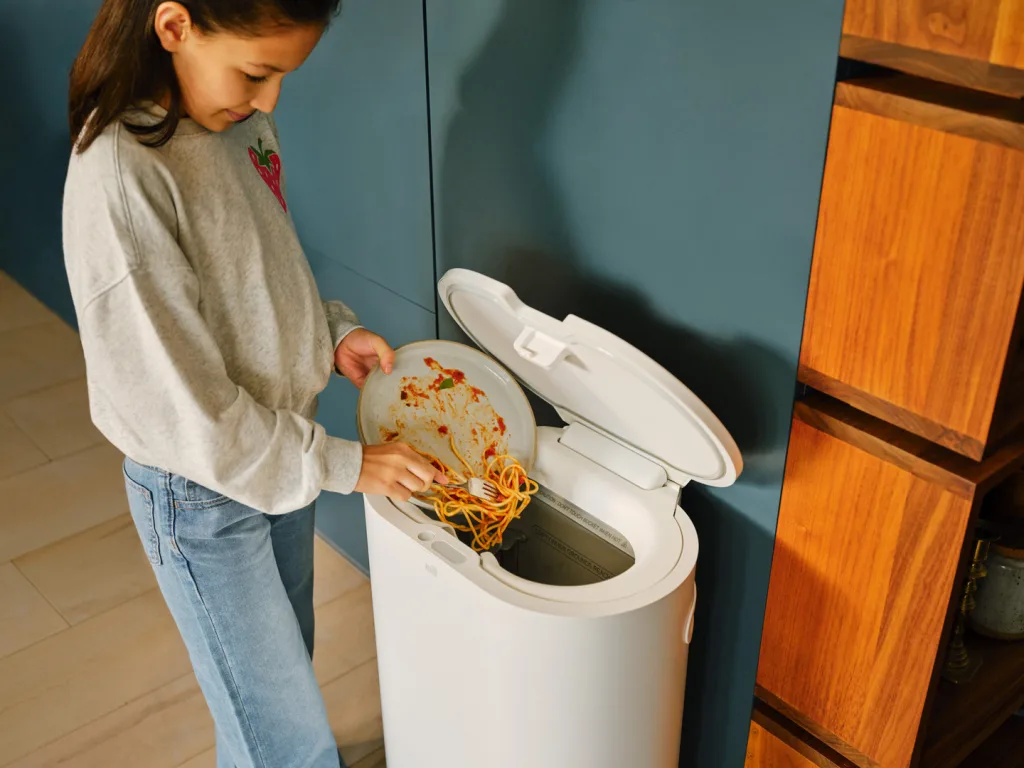
THE FOOD WASTE PROBLEM
By all accounts, the world has a food waste problem. For the majority of households, scraps go into a garbage can, onto a truck, and down into a landfill where they decompose and emit a staggering amount of methane, a greenhouse gas. According to a 2023 study from the Environmental Protection Agency (EPA), food waste is the single most common material sent to landfills, accounting for more than 20% of municipal solid waste. That adds up to more than 62 million tons creating 55 million metric tons of CO2-equivalent emissions annually from U.S. landfills, or as much as 50 million gas-powered cars.
The Mill device offers an easy workaround. Late at night, the metal innards of the Mill food waste bin crunch away at the uneaten remains of the day. The banana peels, the onion ends, the chicken bones and orange rinds and coffee grounds and plate scrapings are all churned around inside a cavity the size of a shoebox. It’s a garbage can, but one with an uncommon amount of intention, design, and Silicon Valley prestige built in.
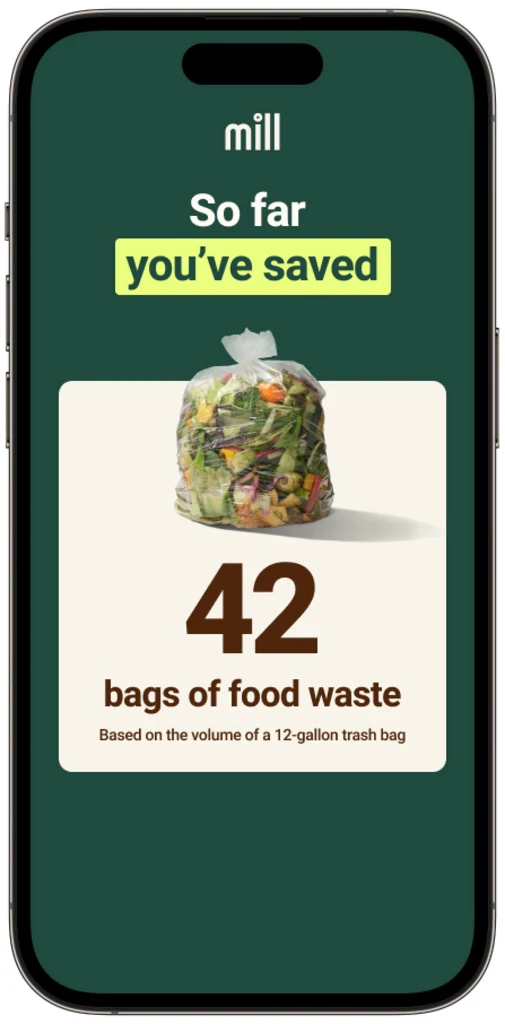
Using a combination of heat and rotating metal blades, the Mill device gradually dehydrates and pulverizes the food scraps placed inside during the day in a mostly quiet and altogether odorless overnight operation. After a month using a Mill lent by the company, Mill’s app informs me that the bin had chewed through 49 pounds of uneaten and inedible food skins and scraps and reduced that down to 13 pounds of a dirt-like brown substance. Dumped in a plastic bag and shipped in a box, these food grounds, which Mill claims have been scientifically optimized to retain a high level of that old food’s nutrients, will soon be turned into commercial-grade chicken feed at a facility in Washington State.
Mill quietly launched in 2020 and shipped its first-generation Mill bins in early 2023. The roughly 10,000 customers who’ve signed on so far are showing that there’s demand for a low-lift alternative to dumping food scraps. But solving the food waste problem will take more than just a few thousand well-meaning early adopters.
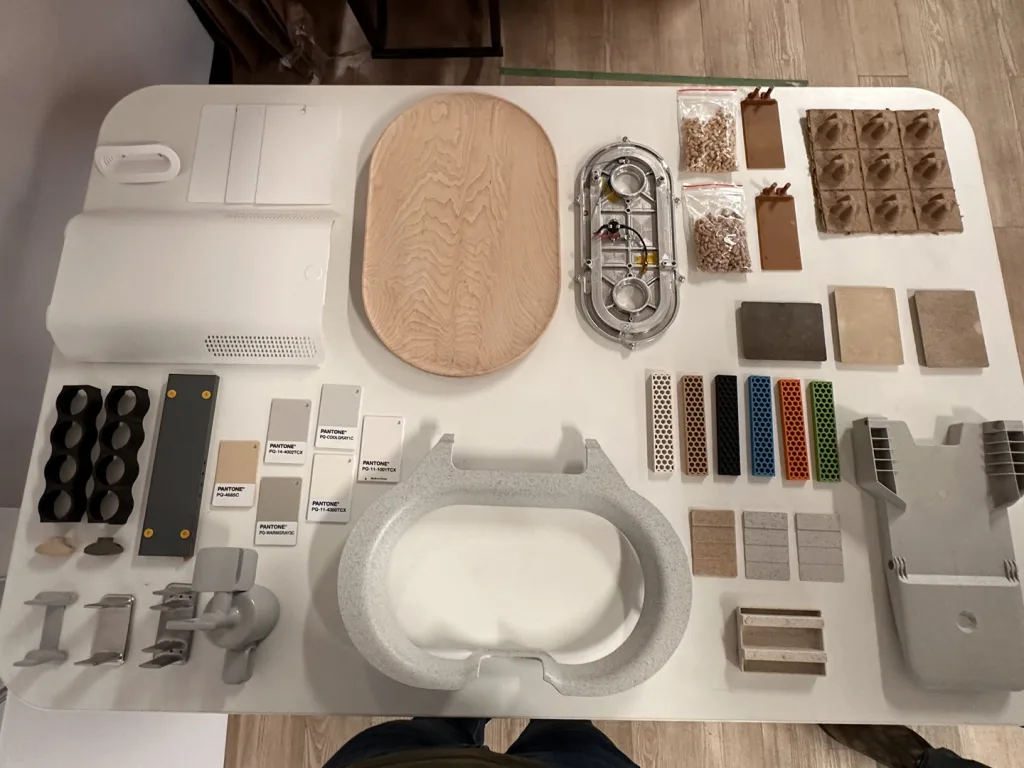
DESIGNING A BETTER BIN
In addition to being considerably unpleasant, grinding up food waste in the home is incredibly complicated, especially with Mill’s goal of converting it all into government-certified, nutrient-rich chicken feed. The bin has to dehydrate food so it contains less than 12% moisture content while also chopping and crumbling it into mealy grounds, while also accommodating new food scraps being added daily for weeks on end, while also being easy-to-use, quiet, and odor-free for users. “If there’s a split-second of friction, the food is going to end up in the trash or down the sink, and we’ll have lost that nutrient forever,” Rogers says.
Mill’s engineers and designers are constantly assessing the bin to eke out a smoother operation and a better output. When I visited this spring, the lab was constantly whirring with activity and the sound of moving parts. In one corner of Mill’s lab, a line of Mills on highly sensitive scales are outfitted with additional moisture sensors to track how changes in the device’s software controls are affecting dry-and-grind run times on different types of food, many of which are more than 50% water. In different corner, engineers have set up another device’s grinding augur to spin about 75 times faster than normal to test out material durability. Nearby, a line of four Mills topped with transparent plexiglass are hopelessly trying to rotate against cylinders of thick industrial rubber that have been jammed inside.
The company offers customers a list of things they shouldn’t put into the device: especially large bones, and, as I found out through a jam notification on the Mill app, artichoke leaves. Engineers also test to make sure any unbreakable or immovable objects won’t burn out the system. “We’ll throw a kitchen knife in there, or pig’s feet,” says Emma Bright, Mill’s head of product design engineering. The staff also conducts unofficial testing on their Mills at home, sometimes accidentally. Kristen Virdone, head of product, recently opened her Mill to find a toddler’s plate inside, still intact. “That was a strict requirement: family-friendly and can’t break,” she says.
Lessons from all these tests can make their way into Mills through software updates, which have improved the efficiency of the dry-and-grind cycle by about 20% or 30%, according to Rogers. They also inform the overall design of the system. Less than a year after shipping its first bins, Mill has just released its second-generation device, which can run through an average day’s one-pound load of fresh food scraps twice as fast.
Some of the improvements come from software, like the artificial intelligence that parses weight and moisture readings to determine how long a dry-and-grind cycle should run. Other improvements come from the device’s physical parts, like the larger heating surface inside the bin, the ventilation fans, the odor-capturing coconut-charcoal filter, and the five bi-directional gear stages in the drivetrain. The biggest change is the bin’s redesigned grinding augurs, which have gone from a rotisserie-style horizontal wheel of blades to two branched, vertical pillars that spin like scarecrows in the wind. On a table in Mill’s lab, prototypes of this new design show the detailed improvements the designers made as the form evolved, with the fins of the blades becoming smoother in places that could be grazed by a hand and sharper where only food grounds would ever make contact.
The design and engineering teams have “gone way down the rabbit hole on some of these problems,” Rogers says. Evaluating, iterating, and reconsidering every aspect of the device is an ongoing process. And even though the second-generation device has just started shipping to customers, Mill’s teams are already at work on the third generation.
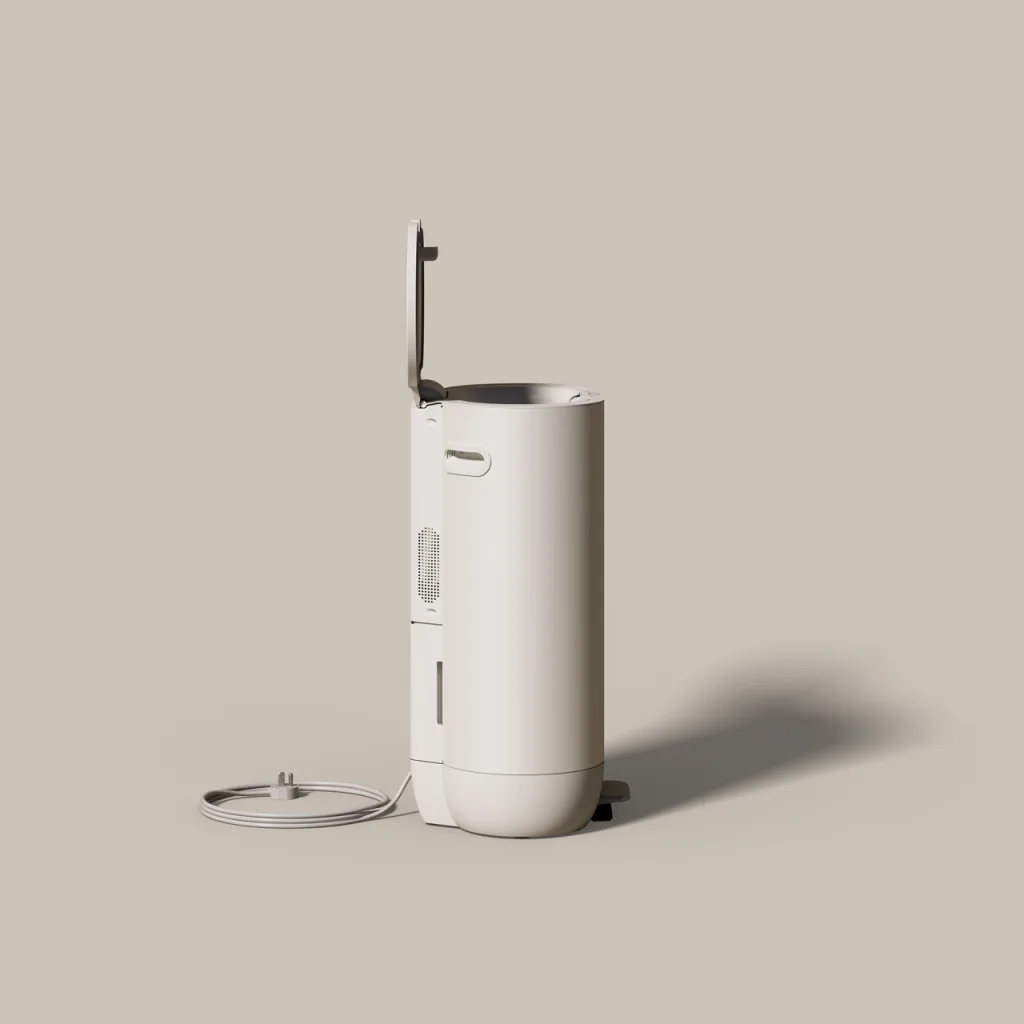
TRASH MEETS SILICON VALLEY
“That strive for perfection is something that Steve drilled into us at Apple,” says Rogers.
Rogers is no Steve Jobs, at least when it comes to temperament. If the late Apple cofounder could charitably be called mercurial, Rogers’ defining adjective is, by nearly all accounts, nice. At 41, he has a bouncy energy, a toothy and frequent smile, and a verbal delivery that seems like it has somehow been sped up. Worth noting: Rogers’ preternatural enthusiasm and charm predate his becoming a billionaire, I’m told.
Wealth has been something of a lucky side effect of Rogers’ long-held passion for using technology to solve people’s problems. Growing up in Gainesville, Florida, he was a computer kid. For his 13th birthday, his grandparents took him on a trip to California, where by request, they visited Apple’s headquarters in Cupertino. “I was the 13-year-old kid in front of the sign taking pictures,” he says. This was the late 1990s, pre-iMac, pre-pre-iPhone. Apple was not the mass-market juggernaut of consumer tech that it is today. There couldn’t have been many teenagers making such a cross-country pilgrimage.

Back home in Florida, he got into robotics as a high schooler, long before STEM became a de facto part of K-12 education. That led him to Carnegie Mellon University, where he did a bachelor’s and a master’s in electrical and computer engineering. While at CMU, he studied under the neurorobotics scientist Yoky Matsuoka on a project to create anatomically correct robotic hands. “Matt was an excellent student, but that is not what made him stand out. He was intense and curious. He was a doer. He wanted to make things happen,” Matsuoka says.
It was PhD-level work, and Rogers intended to go down that path, solving a big and complex but niche problem for people. Matsuoka recalls asking him what he wanted to do with his career “and he was really clear that he wanted to be an innovator in the product space,” she says. “I simply told him that following an academic path would not get him to where he wanted to be eventually.”
Matsuoka encouraged him to try something completely other than robotics, something that could give him more exposure to building products for people. She suggested an internship at Apple.
“She really pushed me, and I’m glad she did,” Rogers says of Matsuoka, who later joined Nest as CTO. “That experience at Apple changed my life.”
He filled out Apple’s online internship application and was selected. In May 2004, the summer before his last year at CMU, Rogers was back in Cupertino. He was assigned to the team building the iPod Mini, where he worked under hardware engineer Tony Fadell, who played a large role in creating the iPod. “Now people probably look at the Mini like a dinosaur, but that was the first iPod that scaled, to Tony’s credit,” Rogers says.
After that summer, Rogers finished school and then returned to Apple in 2005, where Fadell was leading a project that would grow even beyond the iPod Mini. Rogers became one of the early software engineers on the first-generation iPhone, and several other iPhones and iPads that followed. By the time he left Apple to cofound Nest with Fadell in 2010, Rogers had a mere half-decade of professional experience—but all of it revolved around some of the most successful consumer technology products in history. “I got the opportunity to learn from the greats,” he says.
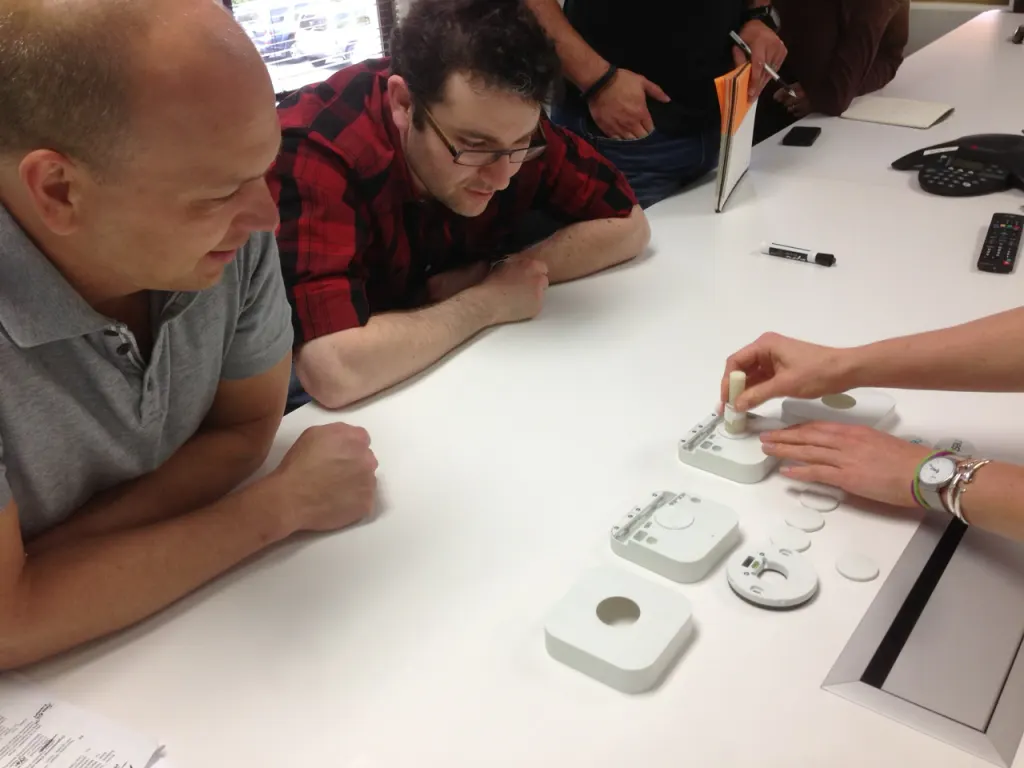
BUILDING A NEW PRODUCT
When Fadell approached Rogers in 2010 with the idea that would grow into Nest, it was good timing for both of them. As Fadell writes in his 2022 book, Build: An Unorthodox Guide to Making Things Worth Making, he’d been thinking about how bad thermostats were for years, based on his own experience of being unable to remotely control the one at his cabin in the mountains. He always started a weekend getaway in freezing conditions.
By 2010, in no small part due to Fadell’s own work on the iPhone, technology had caught up to the problem. The “smart home” was venturing out of Jetsons cartoons and into reality, and the lowly thermostat was ripe for an internet-connected reimagining.
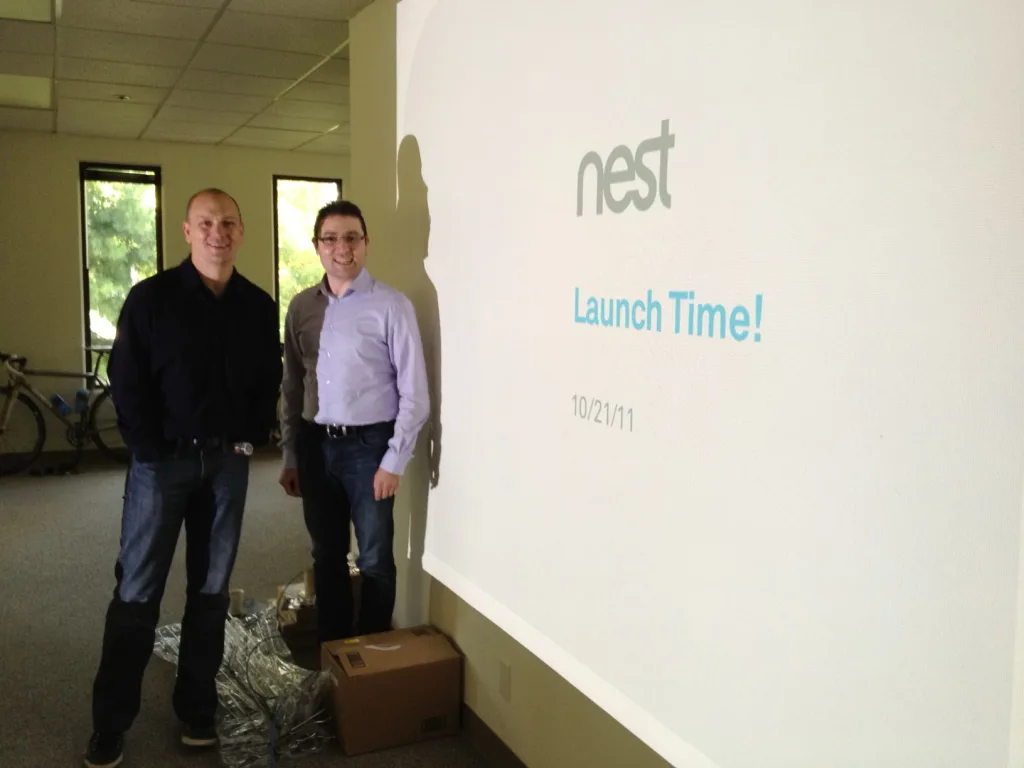
For Rogers, by then a senior manager at Apple, the prospect of making a slightly better version of even a wildly successful product like the iPhone was becoming less appealing. Fadell’s idea of improving the user experience of the thermostat with the added benefit of reducing energy waste appealed to the part of Rogers’ mind that wanted to spend years on a PhD building robotic hands for amputees. “I’m a problem-centric person,” Rogers says.
“He was enthusiastic,” Fadell writes in his book. “And when I say enthusiastic, you should know that Matt is a perpetual motion machine of unstoppable energy.”
The company took shape in 2010 and shipped its first devices 18 months later. Nest was soon a global phenomenon. Sales grew organically, and eventually launched a kind of revolution in the energy world. “Energy companies would say we need this product, we need this experience in our markets,” Rogers says. Utilities began subsidizing Nest thermostats for their customers and racking up energy savings. One utility company in Texas started a billboard campaign featuring Nest, completely unprompted. That same company later ran TV ads featuring Nest that were narrated by actor Matthew McConaughey. “As a startup, that was a crazy thing for us to conceive of,” Rogers says. “But because we were changing people’s mindsets, the utility companies started paying attention.”

REPLICATING SUCCESS
With Mill, Rogers is hoping for a similar trajectory. The idea for Mill came out of the isolation of the pandemic. It was early 2020, and Rogers’ friend and former Nest coworker Harry Tannenbaum was stuck inside thinking about his kitchen scraps and what he guessed must be a big environmental footprint. A bit of research revealed that about 30% of the food that’s grown annually around the world is lost or wasted, and that the majority of this waste comes from households. “It was like, huh, this is a kitchen issue,” Tannenbaum says. “That’s when I called Matt.”
Rogers had left Google-owned Nest in 2018 to turn most of his attention to Incite, the combined investment-philanthropy-advocacy organization he’d founded the year before with his wife, Swati Mylavarapu. Incite was engaged in a range of environmental and progressive-leaning activities, from funding carbon dioxide removal startups to political fundraising for the 2020 presidential campaign of Mylavarapu’s college friend Pete Buttigieg. After talking to Tannenbaum, Rogers quickly realized the environmental toll of food waste was a clear fit with Incite agenda. It also touched on the food waste issues that Rogers’ family was dealing with at the time: fruit flies. “There was yellow sticky paper all around the kitchen,” Rogers recalls.
Like many others, Rogers had dabbled in composting and was quickly overrun by insects. Throwing food waste in the garbage didn’t feel right, but living with fruit fly infestations was less than ideal, especially at a time when people were discouraged from leaving the house. Rogers and Tannenbaum dove into research, making calls to learn more about how people—individuals, researchers, organizations, cities—dealt with food waste. “It was 2020, so everyone was answering their phones. No one was on vacation,” Rogers says. They asked about food waste programs, city-level composting, and other ways that food was being diverted from landfill. They learned that, for the most part, efforts were falling short. “Time after time we would hear that we can’t change people’s behavior at home.” Their experience with Nest suggested this kind of behavioral change was not only possible but profitable.
Rogers and Tannenbaum set out to create a user-friendly way to tackle food waste at home. Recruiting former colleagues from Nest, Google, and Apple, they started building a small team, with seed funding from Rogers and two angel investors. (Tannenbaum, coincidentally, is the son of early Apple graphic designer Susan Kare; sculptures on the Apple campus of her famed Macintosh icon designs appear in Rogers’ photos from his teenage trip to Cupertino.) They began prototyping designs, and thinking through how such a device could counter established waste collection systems and habits, learning from what worked well at Nest. “In both companies, we were completely obsessed with the customer and the customer experience and the touchpoint,” Tannenbaum says.
In the early months, former Nest industrial designer Rocky Jacob, now Mill’s head of industrial design, built makeshift mockups at home. One preliminary example of the bin’s bucket, now on display in Mill’s office, is made from cardboard with razor-scored rounded corners and a handle cribbed from his son’s Lego container. “It was like going back to art school,” he says. Rogers would stop by and Jacob would lean out his front door to show off his latest iterations.
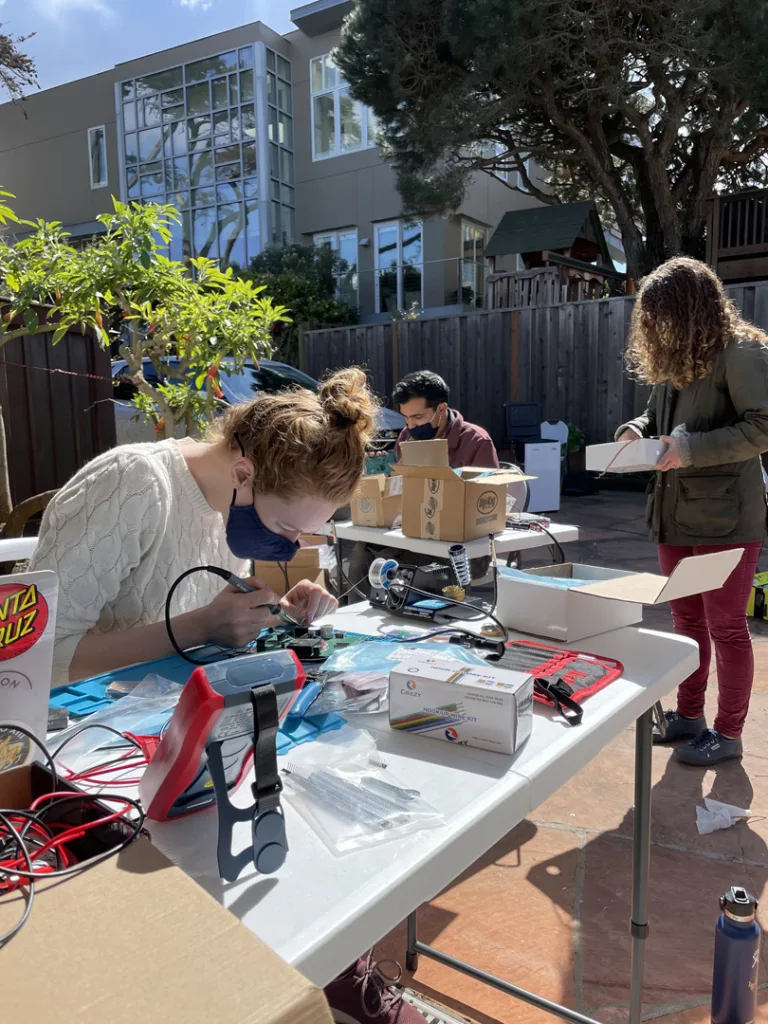
“I think we were optimistic about what it was like to start a company during the pandemic,” Rogers says. “We didn’t get together as a team for six or eight months.” Like the COVID version of a Silicon Valley startup forming in a garage, these first meetings were conducted in a driveway, with everyone standing six feet apart.
From early on, Rogers and Tannenbaum knew they needed to do more than build an intuitive device. While products can certainly play a role in changing behavior, they knew that the food waste problem goes deeper than individual choices. In conjunction with the physical design of the bin, they set out to work directly with farmers who could reuse the chicken feed they’d be making, with cities that could pilot larger trials of Mill bins, and with policymakers in the federal government who could incentivize wider adoption.
One of Mill’s early hires was Luseni Pieh, a former EPA official during the Obama administration. During the two years the company was operating in stealth mode, he and Rogers were setting up meetings with anybody on the Hill who’d take the time to talk, no matter the political party. “Everybody has a relationship with food and everybody has a relationship with waste, and that’s not the case with most policy issues,” Pieh says.
Rogers calls this multifront approach “building all the surround sound around the product.” As he and Tannenbaum were pitching investors, such cross-sector thinking became a major selling point. It helped bring in funders including Fadell, Google Ventures, and the organic food pioneer Gary Hirshberg, who had spent more than 40 years pushing organic food into the mainstream with his Stonyfield Farm yogurt company. “I’m someone who has lived through a sea change of behavior and commerce,” Hirshberg says. He thinks Mill could do something similar for consumer behavior around food waste. “Knowing Matt’s extraordinary track record of getting the impossible done, you can’t help but pay attention,” he says. “I wish I invested more.”
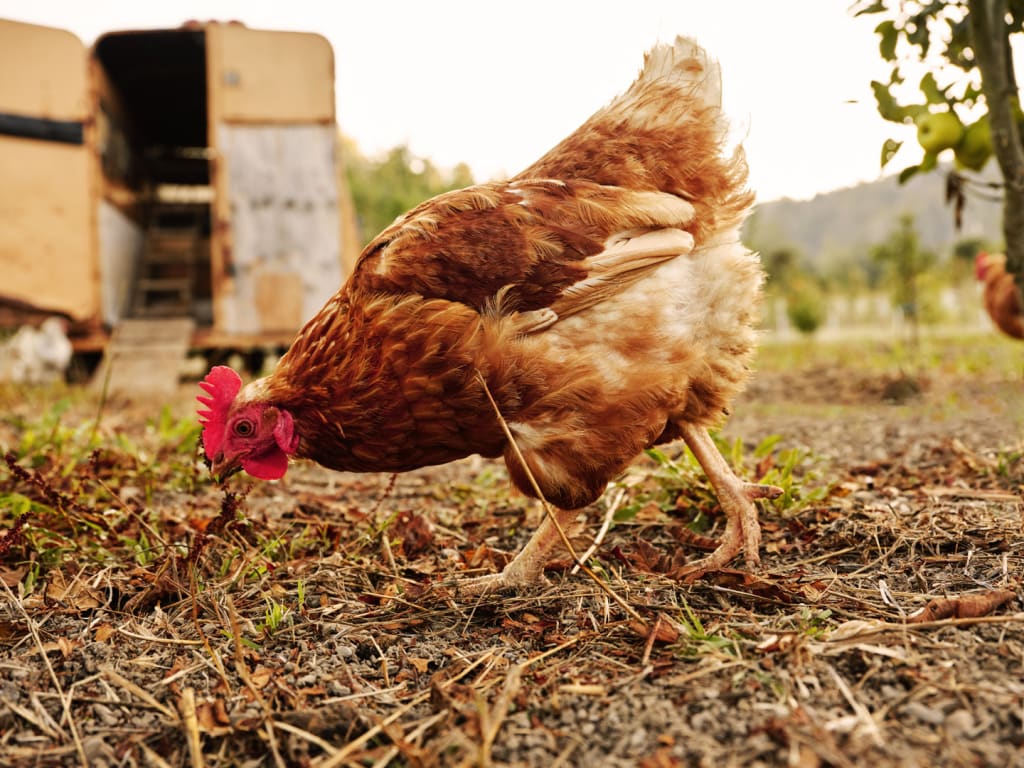
THE FUTURE OF FOOD WASTE
In Mill’s lab, sketches on the wall show where the company may be headed next. There are images of Mill bins in various sizes serving specific types of users, like restaurant kitchens, grocery stores, or any other heavy food user that could feasibly provide a clean stream of food-only waste. If it’s all food, Mill can turn it into chicken feed, and there are more than 160,000 chicken-growing farms in the U.S. that are technically in the market for the stuff.
“That’s the thing that’s so addictive about this problem is you stop seeing waste as waste, and you start seeing it as a resource,” Tannenbaum says. It’s easy to imagine future products from Mill that focus on other types of waste streams with potential resale value, from glass to aluminum to the lithium inside spent batteries. “The 30-year roadmap is not a hard thing to construct,” Tannenbaum says. “It just unfurls.”
For now, Mill is focused on the food that’s wasted in homes. But with only about 10,000 Mills out in the world since the company officially launched in early 2023, a lot of moving parts will need to synchronize for Mill to bring about a sea change. It will require scale in the consumer market for what is essentially a very expensive garbage bin, as well as buy-in from local governments and bureaucracies around the world.
An expanding set of partnerships in Phoenix could be the beginning of a playbook for how Mill can start to address the multiheaded challenge of food waste. Last fall, Mill announced it was joining forces with R.City, a decade-old food-waste-composting service used by about 3,500 customers throughout the Phoenix valley. For a $35 monthly fee, users can subscribe to both Mill and R.City’s pickup service, which adds the food grounds from Mill’s bins to R.City’s existing composting facilities for eventual use on their farms. Subscribers are given quarterly loads of compost for use in their own gardens and can pay more to receive deliveries of fresh produce grown on the farm.
About 300 customers have signed up for the combined Mill and R.City service so far. J.D. Hill, founder of R.City, says the Mill has made the sometimes messy process of diverting food waste into something more palatable to consumers. “They take a lot of the fear out of food waste,” he says. “The only way a huge percentage of households is going to participate is with a device that makes it super easy like the Mill bin does.”
Rogers refers to R.City’s collection and reuse of Mill food grounds as a local loop, and he’s hoping more of the food waste collected by Mill’s bins can take a similar path. Instead of being shipped to the chicken feed facility in Washington—the carbon footprint of which is tellingly covered in the frequently asked questions on Mill’s website—the food waste stays near where it was made. “Your food is going back to the farm to create more food,” Rogers says. “It’s bringing the circular economy to life.”
Mill bins on the ground in Phoenix are still relatively few, but Rogers sees the city as an ideal place to build out the surround sound strategy of Mill’s fight against food waste. That includes support from the top. Phoenix Mayor Kate Gallego has made reducing and reusing food waste part of her sustainability agenda. City facilities also participate in R.City’s food waste collection program, and the city recently built its own composting facility for yard waste, based on resident demand. And now, there are two Mills in use at City Hall. Gallego says stopping food waste before it happens is the ideal, but the ultimate goal is keeping it out of landfills. “We have landfills in the middle of the city, so people are aware of this problem,” she says. “We’re divided politically, but I think everyone agrees we don’t want more landfills.”
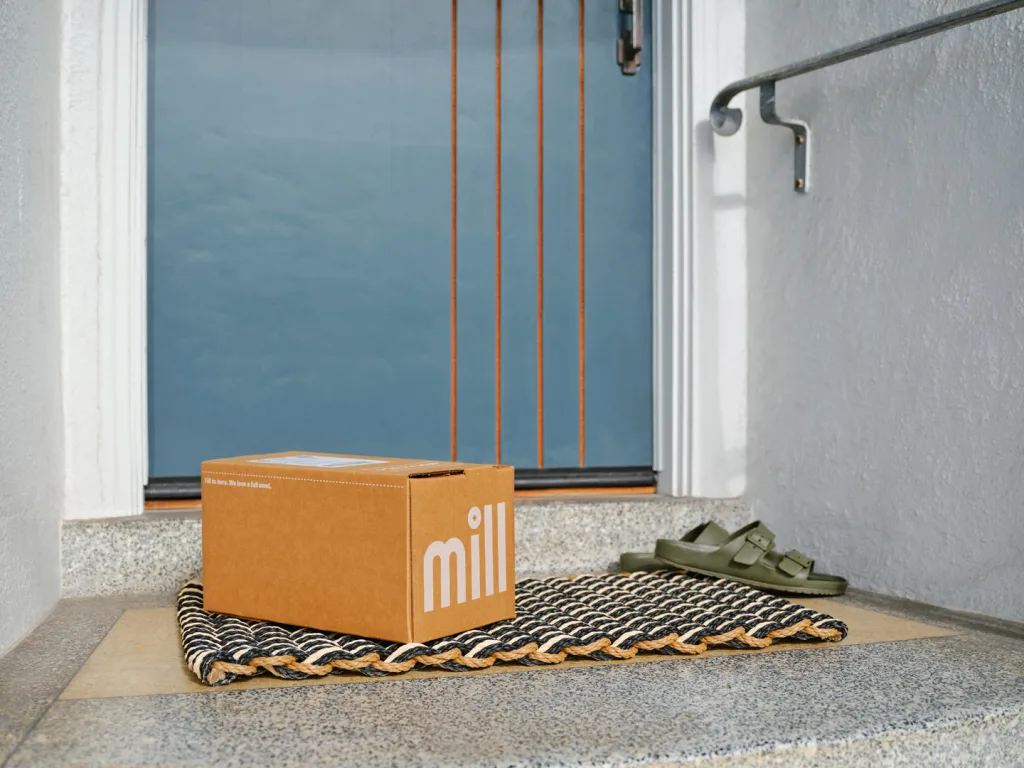
A MORE SYSTEMIC PROBLEM
Food waste is still the primary material that ends up in landfills, and reducing it could help prevent more of them from being needed. The existing waste collection system, which Tannenbaum equates to “trucking water around in diesel trucks and then burying it in the ground where it becomes poison,” could reduce the amount of landfill space it uses, and even cut the length and frequency of its garbage truck routes. That may take time to realize, but even the modest adoption of Mill devices has already diverted more than a million pounds of food from landfills, according to the company’s data. Part of solving the food waste challenge may require chipping away at it, and getting people on board however possible.
“I love the idea of making sustainability irresistible. When it’s easy and works with people’s lifestyle, that’s much more likely to get to scale,” Gallego says.
While Phoenix’s program is the most expansive partnership that Mill has currently, the company also has other municipal-level partnerships, including an ongoing pilot in Tacoma, Washington. The city is collecting a year’s worth of data from Mill users to track the diversion of food waste and quantify the city’s reduction of greenhouse gas emissions—numbers not otherwise easy to account for. It’s a city in the progressive Pacific Northwest that already has municipal compost collection, but even so, more than half the participants in the pilot had never used their green bins. “For a city, that’s the whole point. Can we drive incrementality, can more people participate in these food waste programs,” Rogers says.
Hill, who has run R.City for 11 years, says his company still signs up most customers at farmers markets. “Picking them off one by one. It’s really hard, and slow,” he says. The Mill bin’s ease of use could help lure more people in, but Hill says government support and incentives are what’s really needed for this approach to food waste diversion to take hold. “If the municipalities aren’t going to get involved,” he says, “it’s going to take a lot longer for it to get to a scale where it can be inexpensive.”
Incremental growth may be more realistic for Mill, and Rogers seems willing to bide his time to get Mill bins where they’ll be best used. That means focusing on places like Phoenix, where there’s political support, consumer interest, and a general openness to new technologies and ideas. “You’ve got the right environment to do it,” Rogers says of Phoenix. “There are lots of cities like that in the U.S. and internationally, quite frankly.”

A STICKY PRODUCT
Rogers wants the Mill to be “sticky.” It’s a term that comes up a lot when he talks about his ambitions for the bin, and he means it as a sign that the bin is something people love, something they want to tell their friends about, something that changes their behavior forever. For someone with such a deep background in high-profile consumer devices, it’s probably not surprising that this would be the metric. But it might also be a sign that, for all of Rogers’ intentions of changing the way the world deals with food waste, the altruism may still be outweighed by an instinct to simply make the thing that can sell.
With a growing class of consumers willing and able to pay to be green, the Mill could manage to become sticky without leading to any broader systemic change. Selling a device—even a well-designed, well-functioning, and well-meaning one—may be more easily achieved than a large reshaping of the way food waste is handled.
Based on the precedent set by Nest, Rogers sees consumer adoption as the big first step to changing complicated systems. He finds no conflict in creating a successful device that also does good, and he may not be wrong. “Business is a really good way of driving societal change because business can be inherently scalable,” Rogers says. “But it’s not the only tool in the tool chest. There are lots of other tools to use.”
That’s uniquely true for Rogers himself, with the enormously deep pockets he’s gained through selling Nest. Incite, the multidisciplinary venture, philanthropy, and advocacy organization he runs with his wife, has put the “surround sound” approach into action. One area they’ve found success in over the past several years is the growing carbon dioxide removal industry, which they have, in some ways, willed into being.
Incite simultaneously seeded nonprofits, wrote grants to the National Academies of Science to do research, and invested in a few early technologies and companies. “We did policy advocacy work to create an ecosystem so that those companies could flourish and scale, and those nonprofits could go influence lawmakers to create tax incentives and new research initiatives at the Department of Energy,” he says. “Now this is something that has momentum.”
Since founding Mill in 2020, Rogers has been laying a similar kind of groundwork for food waste, working the government-relations angle with Pieh to meet with everyone from low-level staffers on Capitol Hill to members of the President’s cabinet. (When we first met in New York during Climate Week events that are part of the United Nations General Assembly, Rogers had just come from a lunch with California Governor Gavin Newsom and farm-to-table restaurateur Alice Waters.) Pieh has his eyes set on securing federal tax credits to offset the costs of food waste programs and devices like Mill’s. Other progress is happening at the federal level as well, with the White House recently releasing its first national food waste strategy. “Part of that is because we’ve been seeding it for three years and working with the team that wrote the policy,” Rogers says.
Taking on a problem like food waste, from global scale methane emissions to the kitchen counter decision about where to put a banana peel, can’t just be the work of one company. But with Rogers’ wealth and his comprehensive thinking about how to bring about systems change, Mill may be in the best position to jumpstart larger action. Mill’s growing customer base is certainly a start. And Rogers seems willing to push the mission forward however he can, either through his own wealth or through the doors of powerful people that his status gives him access to.
“There’s probably not somebody on the planet that we cannot get to. Yes, there’s a lot of privilege that comes with that access. But we’re using that privilege for good,” Rogers says. “The way I think about it: If we need to get to somebody, let’s do it. The planet needs our help.”







































